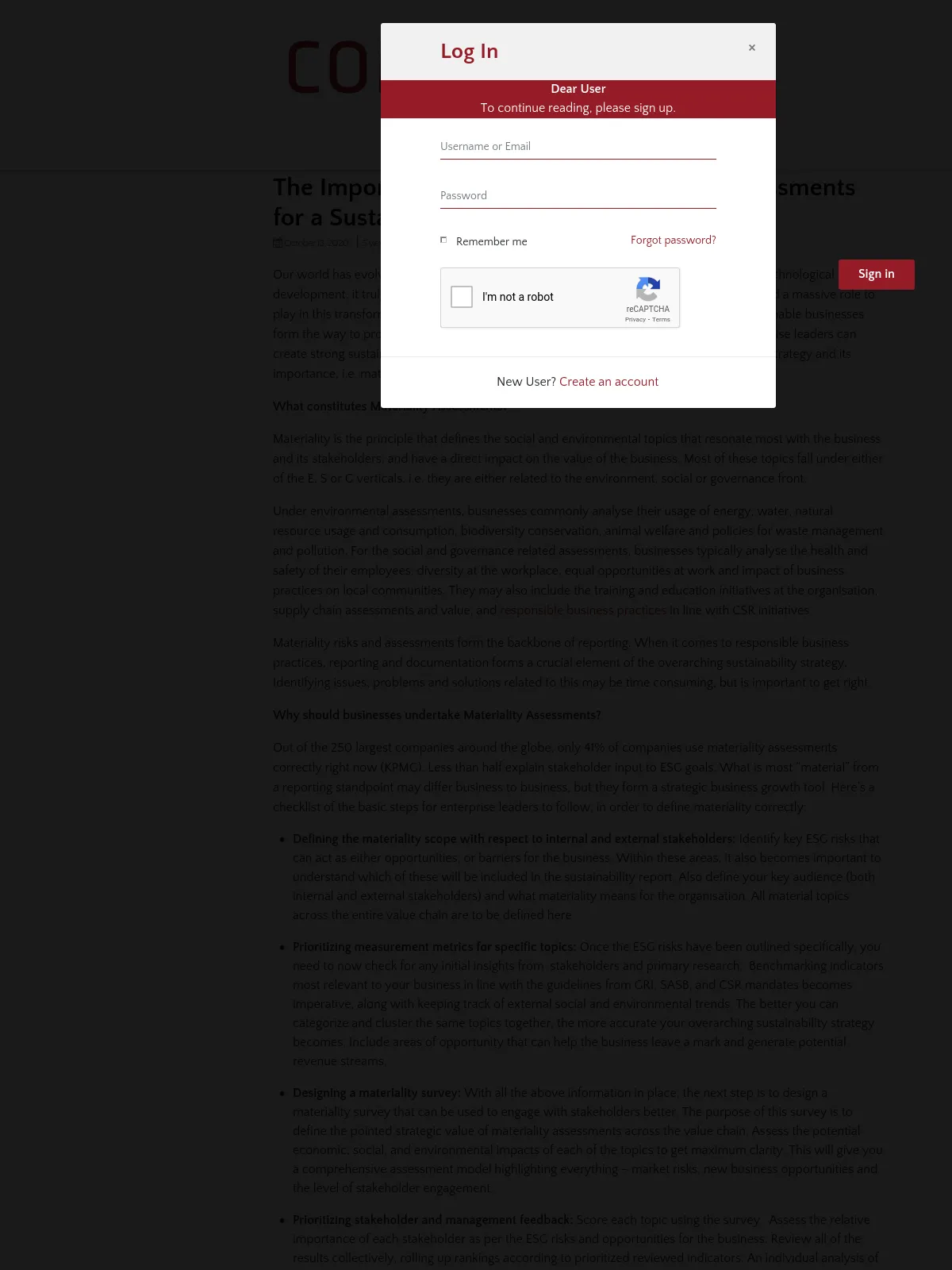The Importance of Materiality Risks and Assessments for a Sustainable Businesses
Blog: NASSCOM Official Blog
Our world has evolved tremendously in the last few decades. Thanks to urbanisation and technological development, it truly has become a global village. The information technology sector has had a massive role to play in this transformation. However, as we continue to advance further, responsible, sustainable businesses form the way to progress, especially in IT. In our last blog (link) we spoke about how enterprise leaders can create strong sustainability strategies. Now, we’re going to focus on one critical part of this strategy and its importance, i.e. materiality risk and assessments.
What constitutes Materiality Assessments?
Materiality is the principle that defines the social and environmental topics that resonate most with the business and its stakeholders, and have a direct impact on the value of the business. Most of these topics fall under either of the E, S or G verticals, i.e. they are either related to the environment, social or governance front.
Under environmental assessments, businesses commonly analyse their usage of energy, water, natural resource usage and consumption, biodiversity conservation, animal welfare and policies for waste management and pollution. For the social and governance related assessments, businesses typically analyse the health and safety of their employees, diversity at the workplace, equal opportunities at work and impact of business practices on local communities. They may also include the training and education initiatives at the organisation, supply chain assessments and value, and responsible business practices in line with CSR initiatives.
Materiality risks and assessments form the backbone of reporting. When it comes to responsible business practices, reporting and documentation forms a crucial element of the overarching sustainability strategy. Identifying issues, problems and solutions related to this may be time consuming, but is important to get right.
Why should businesses undertake Materiality Assessments?
Out of the 250 largest companies around the globe, only 41% of companies use materiality assessments correctly right now (KPMG). Less than half explain stakeholder input to ESG goals. What is most “material” from a reporting standpoint may differ business to business, but they form a strategic business growth tool. Here’s a checklist of the basic steps for enterprise leaders to follow, in order to define materiality correctly:
- Defining the materiality scope with respect to internal and external stakeholders: Identify key ESG risks that can act as either opportunities, or barriers for the business. Within these areas, it also becomes important to understand which of these will be included in the sustainability report. Also define your key audience (both internal and external stakeholders) and what materiality means for the organisation. All material topics across the entire value chain are to be defined here
- Prioritizing measurement metrics for specific topics: Once the ESG risks have been outlined specifically, you need to now check for any initial insights from stakeholders and primary research. Benchmarking indicators most relevant to your business in line with the guidelines from GRI, SASB, and CSR mandates becomes imperative, along with keeping track of external social and environmental trends. The better you can categorize and cluster the same topics together, the more accurate your overarching sustainability strategy becomes. Include areas of opportunity that can help the business leave a mark and generate potential revenue streams.
- Designing a materiality survey: With all the above information in place, the next step is to design a materiality survey that can be used to engage with stakeholders better. The purpose of this survey is to define the pointed strategic value of materiality assessments across the value chain. Assess the potential economic, social, and environmental impacts of each of the topics to get maximum clarity. This will give you a comprehensive assessment model highlighting everything – market risks, new business opportunities and the level of stakeholder engagement.
- Prioritizing stakeholder and management feedback: Score each topic using the survey. Assess the relative importance of each stakeholder as per the ESG risks and opportunities for the business. Review all of the results collectively, rolling up rankings according to prioritized reviewed indicators. An individual analysis of these insights will determine the most important issues, and bring all the data together to highlight commonalities and issues that need to be addressed first.
- Converting insights to action: Share your results and insights with your stakeholders (and beyond!). This typically forms the basis of the business’s annual sustainability report, which can be shared more widely. This will, in the end, provide you with a systemic risk and opportunity map, that gives everyone a more nuanced understanding of the potential growth areas, and help build enterprise resilience.
With the right amount of time, effort and resources, a materiality assessment can become an invaluable tool for gathering insights to propel a business’s sustainability strategy and enable meaningful reporting. An expert, highly skilled team who understands these challenges can lead you in the right direction. At Treeni, we follow a consultant led approach, along with our disruptive, state of the art resustain model, and we have been enabling a smart play of technology and sustainability for enterprises in almost all industries. One step at a time, we can tackle the sustainability challenge and ensure responsible businesses for all!
model, and we have been enabling a smart play of technology and sustainability for enterprises in almost all industries. One step at a time, we can tackle the sustainability challenge and ensure responsible businesses for all!
Written by: Anand MA – Head of Products, Treeni Sustainability Solutions.
The post The Importance of Materiality Risks and Assessments for a Sustainable Businesses appeared first on NASSCOM Community |The Official Community of Indian IT Industry.
